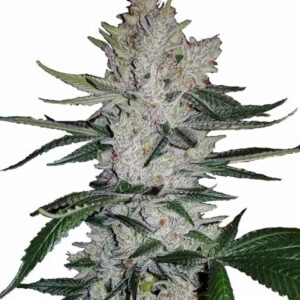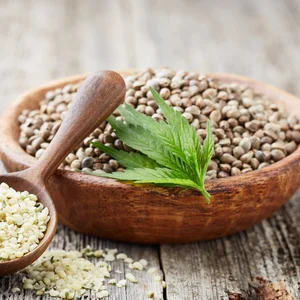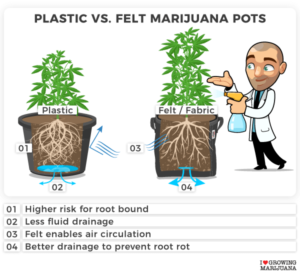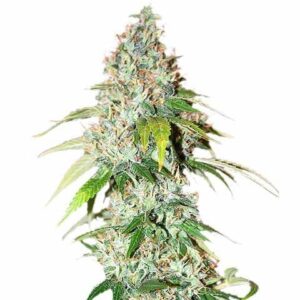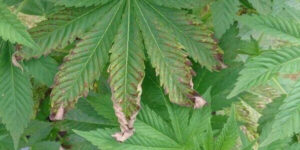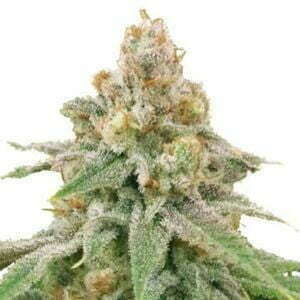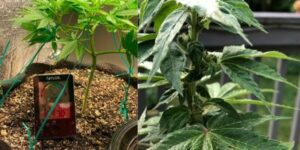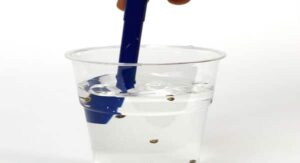Photoperiod describes the amount of time a plant receives each day. In cannabis cultivation, it describes a type of cannabis plant that reacts to light cycles with distinct changes in growth. Does that mean that photoperiod cannabis strains are a subtype similar to autoflowers? No.
Photoperiod seeds and regular seeds describe the same type of cannabis, which is the type that responds to changes in the light cycle. We also use the word photoperiod cannabis seeds to differentiate them from autoflowering and feminized seeds.
Autoflower vs. photoperiod seeds
You cannot compare autoflower vs. photoperiod on their appearance alone. The difference begins once you grow them, starting with their size. A photoperiod plant is generally much taller than an autoflower which is the make-or-break factor for some growers when choosing a strain.
Check out our collection of popular autoflower seeds below if you’re looking for cannabis seeds that are easy to grow.


Buy Autoflower Seeds
- For new and experienced growers
- Easy-growing, low maintenance
- All popular cultivars
The other two main differences between photos and autos are their yield and how they respond to light cycle changes. It’s well-known that autoflowering cannabis strains produce plants that yield less than their photoperiod counterpart, but what’s equally known is how they don’t need a change in light schedule to flower– hence the name.
Other questions that often come up:
Are photoperiods easier to grow?
Photoperiod cannabis plants are said to be slightly more difficult to grow than autoflowering cannabis. This is because any photoperiod cannabis strain needs a change in its light cycle to start flowering, unlike autoflowers which switch to their flowering period automatically.
Do autoflowers grow faster than photoperiod seeds?
Autoflowering seeds grow much faster than photoperiod ones, thanks to their ruderalis genetics. Because cannabis ruderalis grew in the harsh conditions of southern Siberia with poor soil conditions and short growing seasons, it needed to adapt. The result is a strain of cannabis known for producing an early-maturing, autoflowering crop.
Do photoperiods yield more?
Generally speaking, photoperiod cannabis plants produce far more smokable flowers than autoflowers because of how much larger they grow. A recent 2023 study also showed that optimizing light schedules for photoperiod strains resulted in higher yield and greater cannabinoid content.
Are photoperiod seeds feminized?
Not necessarily. While you can find regular photoperiod seeds that are also feminized, it’s not always the case. Photoperiod seeds cover regular cannabis seeds as well, which produce female and male plants.
Go here if you want to purchase feminized cannabis seeds, if you are looking for seeds with high yields and guaranteed germination.
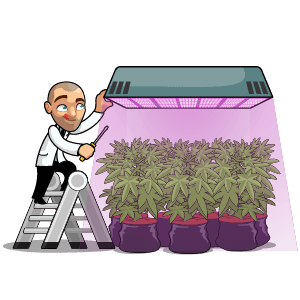

Shop Feminized Seeds
- Female plants for healthy bud
- Quality genetics, high yields
- All popular cultivars
How do you grow photoperiod seeds?
When growing photoperiod cannabis seeds, you must be certain about three key factors. These are the length of your plant’s veg time, the light schedule you use during vegging, and the light schedule you use for flowering. These three factors will determine the yield and cannabinoid content of your marijuana.
Typically cannabis needs a vegetative period of at least 4-6 weeks to grow and develop. This ensures the highest possible yield. In terms of lighting, the general agreement is giving marijuana 18 hours of light and 6 hours of darkness during vegging and a static 12 hours of light and darkness during flowering.
Other factors will affect your yield and the time it takes to grow your marijuana, such as the type of strain you choose (sativa vs. indica), your setup (indoors or outdoors), and the growing technique you apply.
Check out our weed marijuana grow bible for more information on how you can control the growth of your marijuana plants.
How long do photoperiods take from seed to harvest?
Indoors, photoperiods can take between 15 and 16 weeks from seed to harvest. Outdoors, photoperiods can take between 20 and 21 weeks from seed to harvest.
Again, these numbers are predicated on the choices you make as a grower. Do you want to harvest sooner? Or do you want to give the plant all the time she needs? You’re in control and there are many different options to utilize that control. Like, when you’re growing outside and you want your plants to flower earlier, you can implement a ‘light deprivation technique’ to achieve that.
How early can you flower a photoperiod?
The earliest you can initiate flowering is after two weeks of vegging photoperiod plants. But is it the best time to switch? It depends on your preference.
A 2022 study confirmed that the yield of sativa strains is tied to the number of weeks you give them to veg. A shorter vegetative period is preferable for maximizing yield, but the trade-off is decreased potency. To increase THC and CBD levels, you must give your plants longer veg but at the cost of decreased yield.
Also read
Want to know more about the flowering stages for photoperiod plants? Read our flowering stage guide.
That choice between greater yield but less potent bud and more potent bud for less yield is a personal preference– a choice you can only have as a home grower.
Does photoperiod affect germination?
No studies show that the photoperiod trait in cannabis affects the germination of its seeds. This is especially evident when comparing autoflowers and photoperiod seeds; they both take the same number of days to germinate (1-3 days).
But, a 2017 study showed the relationship between photoperiodism and seed germination. In it, Thale cress produced seeds with higher germination percentages by experiencing short days before reproduction (vegging) and long days during reproduction (flowering).
It’s unclear if this translates to marijuana cultivation since cannabis would require vegging under 12 hours of light and darkness and flowering at 18 hours of light and 6 hours of darkness.
How much light do photoperiods need?
Although the general agreement for the amount of daily light you should give your photoperiods during vegging is 18 hours and 12 hours during flowering, science may suggest otherwise.
A recent study said giving your cannabis a static 12 hours of light and darkness isn’t optimal if you’re looking to maximize the fresh weight of your yield and the cannabinoid content in your flowers.
The recommended practice is to give your flowering cannabis 14 hours of light at the start before reducing it to 12 or 10 hours. Doing so results in increased yield and potency.
This is especially true with the following strains:
Buying photoperiod seeds
When purchasing cannabis seeds, knowing what you want is important. If you want to be a breeder or produce seeds, use photoperiod cannabis seeds. They’re also good if you want to breed strains, create new phenotypes or grow clones.
But if you’re a new grower who just wants to grow their own weed, we recommend starting with feminized or autoflower seeds. They’re much easier to care for, and in particular, feminized seeds are more convenient since you don’t need to worry about accidentally growing a male plant that would pollinate your females.
Lastly, you must source your seeds from the right seed bank. You can trust ILGM.com for high-quality cannabis seeds. While there, don’t forget to download Robert’s Grow Bible to make growing marijuana fun and easy to learn.
Happy growing!
- SEO Powered Content & PR Distribution. Get Amplified Today.
- EVM Finance. Unified Interface for Decentralized Finance. Access Here.
- Quantum Media Group. IR/PR Amplified. Access Here.
- PlatoAiStream. Web3 Data Intelligence. Knowledge Amplified. Access Here.
- Source: https://www.ilovegrowingmarijuana.com/growing/photoperiod-seeds/
- :is
- :not
- $UP
- 1
- 10
- 12
- 14
- 15%
- 16
- 20
- 2017
- 2021
- 2023
- 300
- a
- About
- Achieve
- adapt
- affect
- After
- Agreement
- All
- alone
- also
- always
- amount
- an
- and
- any
- Apply
- ARE
- AS
- At
- automatically
- BE
- because
- before
- below
- BEST
- between
- both
- BREED
- but
- by
- CAN
- Cannabinoid
- cannabis
- cannabis strains
- care
- case
- cbd
- certain
- change
- Changes
- choice
- choices
- Choose
- choosing
- collection
- come
- comparing
- conditions
- content
- control
- Convenient
- Cost
- Counterpart
- cover
- create
- crop
- cultivation
- cycle
- cycles
- daily
- day
- Days
- depends
- describe
- Determine
- develop
- difference
- differences
- different
- differentiate
- difficult
- distinct
- do
- does
- doing
- Dont
- download
- during
- each
- Earlier
- Early
- easier
- easy
- ensures
- equally
- especially
- evident
- experienced
- experiencing
- factor
- factors
- far
- faster
- females
- Find
- flower
- following
- For
- fresh
- from
- fun
- General
- generally
- Genetics
- Give
- Giving
- good
- greater
- Grow
- growers
- Growing
- Grows
- Growth
- guaranteed
- harvest
- Have
- healthy
- hence
- here
- High
- high-quality
- higher
- highest
- his
- Home
- HOURS
- How
- HTTPS
- if
- implement
- important
- in
- Increase
- information
- initiate
- IT
- ITS
- just
- Key
- Know
- Knowing
- known
- larger
- LEARN
- least
- Length
- less
- levels
- light
- Lighting
- like
- Long
- longer
- looking
- Low
- Main
- make
- many
- marijuana
- Maximize
- maximizing
- May..
- mean
- more
- much
- must
- name
- necessarily
- Need
- needed
- needs
- New
- no
- number
- numbers
- of
- often
- on
- once
- ones
- only
- optimal
- optimizing
- Options
- or
- Other
- otherwise
- our
- out
- outdoors
- outside
- own
- particular
- period
- personal
- Photos
- plants
- plato
- Plato Data Intelligence
- PlatoData
- poor
- Popular
- possible
- potency
- practice
- preferable
- produce
- Produced
- purchasing
- Questions
- Reacts
- Read
- receives
- recommend
- recommended
- reducing
- regular
- relationship
- reproduction
- require
- Respond
- result
- resulted
- Results
- Said
- same
- schedule
- Science
- seasons
- seed
- seeds
- setup
- she
- Short
- should
- show
- showed
- similar
- since
- Size
- So
- soil
- some
- Source
- Southern
- speaking
- Stage
- stages
- start
- Starting
- Strains
- studies
- Study
- such
- suggest
- Switch
- Take
- takes
- terms
- than
- thanks
- that
- THC
- The
- their
- Them
- There.
- These
- they
- this
- three
- Tied
- time
- to
- true
- Trust
- two
- type
- under
- unlike
- use
- utilize
- vs
- want
- wants
- we
- weed
- Weeks
- weight
- WELL
- well-known
- What
- when
- which
- while
- WHO
- will
- with
- Word
- worry
- would
- Yield
- yields
- you
- Your
- zephyrnet

